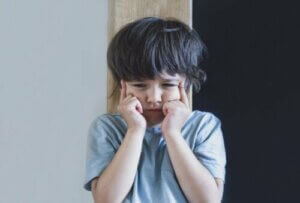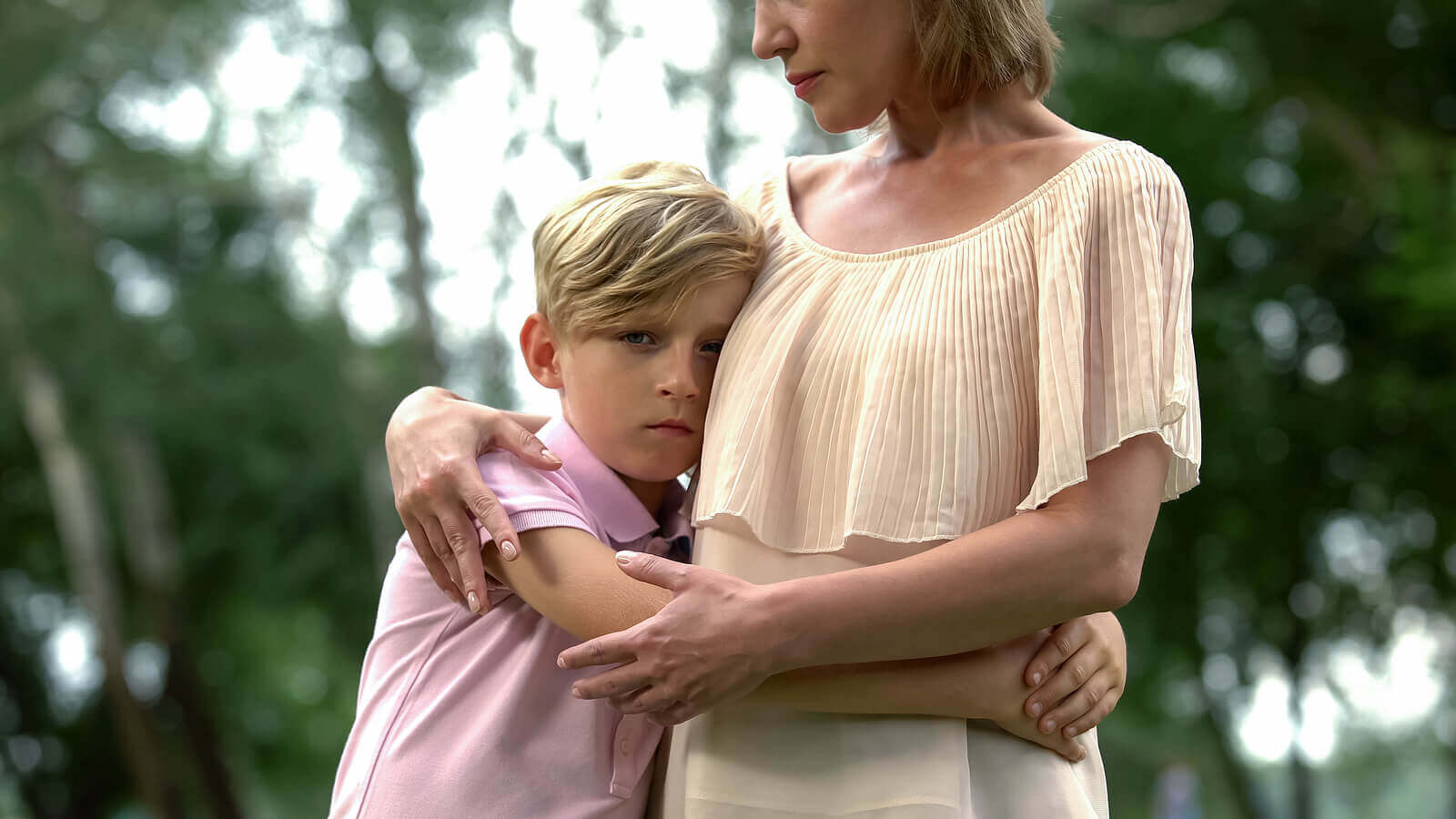Internalizing and Externalizing Symptoms in Children

It’s important to know what internalizing and externalizing symptoms are because psychological problems in children are diverse. Kids with different behaviors may suffer from emotional, social and psychological problems.
Due to this variety of manifestations, it’s not always easy to detect that children are suffering and that they need professional help. This is why it’s also important to understand the difference between internalizing and externalizing symptoms.
However, the presence of these symptoms doesn’t always mean that the child suffers from a condition or disorder. Nevertheless, it’s important to take them into account. If they don’t receive proper attention, these symptoms may develop into something more serious. So, a proper orientation from childhood may prevent a bigger suffering.

What are internalizing and externalizing symptoms?
Internalizing and externalizing symptoms are very different from each other. However, both of them hide emotional and behavioral conducts. Internalizing symptoms are internally-focused discomforts. Whereas, externalizing symptoms are externally-focused behaviors. Let’s take a look at the symptoms in detail.
Internalizing symptoms
When children think, feel and act in an unusual way, they tend to suffer. In the case of internalizing symptoms, this suffering is focused internally and it leads to:
- Crying, sadness and suicidal thoughts.
- Inability to enjoy any activity, slowness and passiveness.
- Perfectionism and thoughts of inferiority.
- Sleep and appetite alterations.
- Fears and phobias of all kind.
- Anxiety, nerves and frequent concerns.
- Attachment or dependency on adults.
- Somatic symptoms, such as gastrointestinal problems or medically unexplained pain.
Externalizing symptoms
On the other hand, in the case of externalizing symptoms, suffering is externally focused. And it leads to:
- Uncontrollable emotions.
- Difficulty in handling impulses.
- Irritability and aggressive behavior.
- Incompetence to follow rules.
- Behavioral problems and difficulty in personal relationships.
Detection
As seen before, it’s easier to detect externalizing symptoms. These problems are noticeable, because they interfere with children’s normal functioning at home or school.
Aggressiveness, disobedience and conflicts with other classmates are visibly noticeable. Thus, parents and teachers realize something is wrong.
On the other hand, internalizing symptoms often go unseen, which is paradoxical since they’re more frequent. However, these might be subjective elements that belong to the internal world of the child and adults can’t detect them.
Besides, these difficulties don’t cause any problems to family members, teachers or classmates, since the suffering occurs inside the child.
Furthermore, these symptoms manifest differently for girls or boys. Boys usually externalize their behaviors. And, girls tend to become more anxious, sad and dependent. These differences often become more notorious once they reach adolescence.

This happens because of brain differences between boys and girls. In addition, cultural roles imposed on boys and girls are related. Stereotypically, boys are allowed to show aggressive behavior and girls are expected to cry and be passive.
Treatment
In this sense, if you’re a mother, pay attention to your child’s behavior, even if it’s not upsetting or striking. Notice what they think of themselves and others. Check their emotions, look for excessive or inappropriate fear for their age. These details may be internalizing symptoms that constitute alarm signs.
In conclusion, if you detect internalizing or externalizing symptoms in your children, don’t overlook them. They may disappear once they grow up or they may develop into more serious disorders. Thus, if you have concerns, visit a psychologist and ask for help.
It’s important to know what internalizing and externalizing symptoms are because psychological problems in children are diverse. Kids with different behaviors may suffer from emotional, social and psychological problems.
Due to this variety of manifestations, it’s not always easy to detect that children are suffering and that they need professional help. This is why it’s also important to understand the difference between internalizing and externalizing symptoms.
However, the presence of these symptoms doesn’t always mean that the child suffers from a condition or disorder. Nevertheless, it’s important to take them into account. If they don’t receive proper attention, these symptoms may develop into something more serious. So, a proper orientation from childhood may prevent a bigger suffering.

What are internalizing and externalizing symptoms?
Internalizing and externalizing symptoms are very different from each other. However, both of them hide emotional and behavioral conducts. Internalizing symptoms are internally-focused discomforts. Whereas, externalizing symptoms are externally-focused behaviors. Let’s take a look at the symptoms in detail.
Internalizing symptoms
When children think, feel and act in an unusual way, they tend to suffer. In the case of internalizing symptoms, this suffering is focused internally and it leads to:
- Crying, sadness and suicidal thoughts.
- Inability to enjoy any activity, slowness and passiveness.
- Perfectionism and thoughts of inferiority.
- Sleep and appetite alterations.
- Fears and phobias of all kind.
- Anxiety, nerves and frequent concerns.
- Attachment or dependency on adults.
- Somatic symptoms, such as gastrointestinal problems or medically unexplained pain.
Externalizing symptoms
On the other hand, in the case of externalizing symptoms, suffering is externally focused. And it leads to:
- Uncontrollable emotions.
- Difficulty in handling impulses.
- Irritability and aggressive behavior.
- Incompetence to follow rules.
- Behavioral problems and difficulty in personal relationships.
Detection
As seen before, it’s easier to detect externalizing symptoms. These problems are noticeable, because they interfere with children’s normal functioning at home or school.
Aggressiveness, disobedience and conflicts with other classmates are visibly noticeable. Thus, parents and teachers realize something is wrong.
On the other hand, internalizing symptoms often go unseen, which is paradoxical since they’re more frequent. However, these might be subjective elements that belong to the internal world of the child and adults can’t detect them.
Besides, these difficulties don’t cause any problems to family members, teachers or classmates, since the suffering occurs inside the child.
Furthermore, these symptoms manifest differently for girls or boys. Boys usually externalize their behaviors. And, girls tend to become more anxious, sad and dependent. These differences often become more notorious once they reach adolescence.

This happens because of brain differences between boys and girls. In addition, cultural roles imposed on boys and girls are related. Stereotypically, boys are allowed to show aggressive behavior and girls are expected to cry and be passive.
Treatment
In this sense, if you’re a mother, pay attention to your child’s behavior, even if it’s not upsetting or striking. Notice what they think of themselves and others. Check their emotions, look for excessive or inappropriate fear for their age. These details may be internalizing symptoms that constitute alarm signs.
In conclusion, if you detect internalizing or externalizing symptoms in your children, don’t overlook them. They may disappear once they grow up or they may develop into more serious disorders. Thus, if you have concerns, visit a psychologist and ask for help.
All cited sources were thoroughly reviewed by our team to ensure their quality, reliability, currency, and validity. The bibliography of this article was considered reliable and of academic or scientific accuracy.
- Achenbach, T. M., & Edelbrock, C. (1991). Child behavior checklist. Burlington (Vt), 7, 371-392. https://books.google.es/books?hl=es&lr=lang_es&id=YxCXh5ZvTksC&oi=fnd&pg=PA372&dq=Achenbach,+T.M.+y+Edelbrock,+C.S.+(1983).+Manual+of+Child+Behavior+Checklist+and+Revised+Child+Behavior+Profile.+Burlington:+Univeristy+of+Vermont,+Department+f+Psychiatry.&ots=uI6RhS-e-x&sig=4Uxn0Ypy-FYn1S-WCJHykUdDtUA#v=onepage&q&f=false
- Hinshaw, S. P. (1992). Externalizing behavior problems and academic underachievement in childhood and adolescence: causal relationships and underlying mechanisms. Psychological bulletin, 111(1), 127. https://www.researchgate.net/publication/21616812_Externalizing_behavior_problems_and_academic_underachievement_in_childhood_and_adolescence_Causal_relationships_and_underlying_mechanisms
This text is provided for informational purposes only and does not replace consultation with a professional. If in doubt, consult your specialist.








